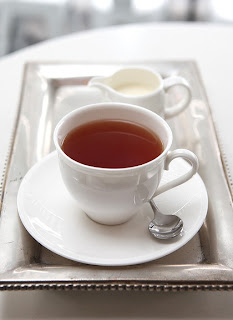The fast paced lifestyle of adults today is leaving many individuals feeling mentally exhausted.
Fatigue is among the top ten health complaints received by doctors around the world. Despite modern luxuries, true relaxation keeps floating out of reach. The best way to tackle the situation, according to experts, is to bring about a radical change from old habits.Seven keys to refresh your mind and soul :-
(1). Self Care : -
Every individual should take a close look at their daily lifestyle to determine what areas need improvement. Make an appointment with your physician for a physical to assess for possible iron deficiency anemia, thyroid function or an infection that could be causing fatigue symptoms. Then decide if you are consuming the servings suggested from each food group for appropriate nutrition.
Caffeine and sugar should be avoided while increasing the intake of fruits, vegetables, and whole grains. Medical experts suggest taking a multivitamin supplement and drinking at least 64 ounces of water (1/3 rd of your body weight in Kgs X 100 ml.) daily to replenish your brain and body.
(2). Positive thinking : -
Our thinking process is influenced by the constant monologue in our minds. When there is an overdose of negative feedback, energy levels go down.
Irrational, self-defeating thoughts serve no purpose other than to bring on fatigue and an overwhelming sense of helplessness. Blaming ourselves for every single mistake allows nagging thoughts to occur, causing physical fatigue and a sluggish mind. Experts recommend substituting negative thinking with positive ones.
(3). Time out : -
Taking a few minutes off every hour or two helps the brain to recharge.
It provides a chance to look at the problem in hand with a new perspective and explore solutions from different angles. When you are doing some important task taking a few minutes off may appear to be a difficult job, but psychologists believe that there are many benefits that are cured by such an exercise.
(4). Sleep : -
Adults require six to seven hours of sleep every night.
If you are experiencing insomnia it can escalate the symptoms of mental fatigue. Create a routine each night that prepares you for bed. Have a glass of hot milk (milk has tryptophan amino acid which induces sleep). Turn off lights and any media that will keep your brain stimulated. Your brain will then release the 'melatonin' that regulates the sleep and wake cycles.
(5). Eat right : -
Often, our eating patterns are the first to suffer when our work load piles up. Appeasing a hungry stomach with easily available junk food, rather than nutritious food at regular intervals, can create havoc with fitness levels. Reaching for high calorie foods provide a temporary boost to flagging energy levels. But such foods keep energy up only for a short period of time. Glucose level dips soon afterwards, resulting in distraction and an inability to concentrate. Simple sugars shoot up blood sugar level and provide instant energy, but only temporarily.

Diet rich in complex carbohydrates works best for a slow and steady release of energy. All whole grains, a few vegetables and some fruits are great sources of complex carbs.
(6). Water therapy : -
When water intake is down, energy and concentration levels are affected. Water accounts for almost sixty per cent of our body weight. After oxygen it is the most important element needed to sustain human life.
So it is not surprising that decrease levels of water in the body result sin fatigue. There is a loss of fluid through sweating and urination. Unless the lost fluids are replenished, the kidney goes on a conservation mode, affecting the workings of other body systems. Loss of water may lead to fatigue, dizziness, irritability, lack of concentration, diminished muscular endurance and other serious conditions. Water is important to hydrate the tissue including brain tissue.
(7). Get some exercise : -
The weight of our brain is less than five per cent of our body, yet it uses up thirty per cent of the oxygen taken in. One of the most important factors affecting proper functioning of the brain is the supply of adequate levels of oxygen. Regular exercise helps in routing of oxygen to the brain and heart. Exercise helps in improved blood flow to the brain and helps to remove toxin from the body.
A study published in the March 2009 Journal of Applied Physiology reports, “Mental fatigue impairs physical performance in humans.” Physicians recommend a minimum of 30 minutes of exercise three times a week. Exercise will increase your stamina and the oxygen level in your bloodstream. The brain utilizes 30 % of the oxygen in your body, so increasing oxygen in the body will improve cognition. Taking the steps to
maintain a healthy mind, body and spirit should be a part of your daily lifestyle. If you believe that you do not have the time to take care of yourself now, then you will need to make the time later if you become ill. Your best option is to start today and make the right choices for you. (8). Colour Codes : -
Colours influence our moods. Cheerful yellows, oranges and reds give a boost to creativity while pale or blue colours promote lethargy.
Blue is known to be a cold color and can put you in a depressed or sad mood.On the other end of the scale red is known as a hot firy color and is said to put humans in a state of rage or anger mood.
Of course, an overdose of stimulating colours can provide to be distracting too. Care should be taken to create harmonious blends of colours that soothe and also induce creativity.


































